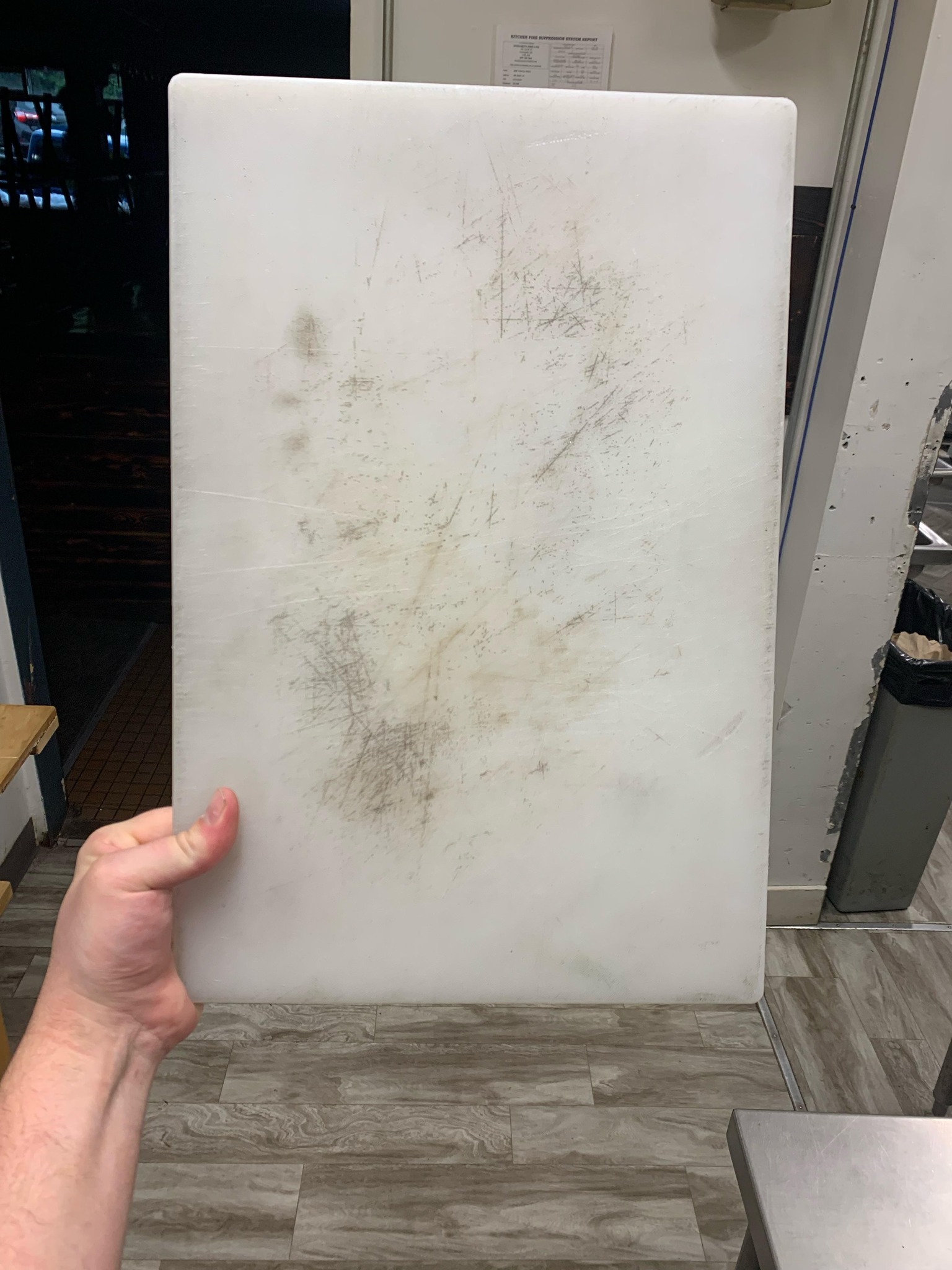Plastic cutting boards are an essential tool in most kitchens. They’re durable, lightweight, and able to withstand heavy daily use. However, if not cleaned properly, they can quickly become a hotspot for bacteria, unpleasant odors, and unsightly stains. The good news is that with a little effort and the right techniques, you can keep your plastic cutting boards clean and safe for food preparation. Here’s a comprehensive guide to help you maintain them, ensuring they remain in top condition.

1. Basic Cleaning Method: The Everyday Approach
Materials Needed:
- Dish soap
- Warm water
- Sponge or soft cloth
To maintain your cutting boards after everyday use, a quick cleaning routine is essential. Start by rinsing your board under warm water to remove any leftover food particles. Apply a few drops of dish soap directly onto the surface and scrub using a soft sponge or cloth. Pay special attention to any grooves or cuts, as food can get trapped in these areas. Once thoroughly scrubbed, rinse well with warm water and allow the board to air dry completely. This simple step helps prevent bacteria from building up and keeps your cutting board ready for the next use.
2. Removing Tough Stains and Odors with Vinegar and Baking Soda
Materials Needed:
- White vinegar
- Baking soda
- Scrubbing pad
For those stubborn stains and lingering odors, a combination of baking soda and vinegar works wonders. Start by creating a paste using baking soda and a little water. Spread the paste over the stained areas and use a scrubbing pad to work it into the surface. Rinse thoroughly once you’re done.
Alternatively, you can spray white vinegar directly onto the board and let it sit for a few minutes before wiping it clean. The acidity of vinegar not only helps disinfect the board but also neutralizes bad smells, leaving your board fresh.
3. A Natural Solution: Lemon Juice and Coarse Salt
Materials Needed:
- Lemon
- Coarse salt
If you’re looking for a more natural way to clean your cutting boards, lemon juice and coarse salt can do the trick. Start by sprinkling a generous amount of coarse salt over the surface of the board. Next, cut a lemon in half and use it as a scrubber, pressing the salt into the board with the lemon’s juicy side. The acidity of the lemon helps kill bacteria, while the salt acts as a mild abrasive to lift away grime and stains. After scrubbing, rinse the board with warm water and let it dry. This method not only cleans but also leaves a pleasant citrus scent.
4. Deep Cleaning with Hydrogen Peroxide
Materials Needed:
- Hydrogen peroxide (3% solution)
- Spray bottle
For times when you need a deeper clean, especially after handling raw meat, hydrogen peroxide is an excellent disinfectant. Pour some hydrogen peroxide into a spray bottle and generously spray it over the entire surface of your cutting board. Allow it to sit for about 5-10 minutes to disinfect thoroughly. Then, rinse the board well with warm water and let it air dry. This method is effective in eliminating bacteria and neutralizing odors, ensuring your board is safe for future use.
5. Dishwasher Cleaning: The Easy, No-Fuss Option
Most plastic cutting boards are dishwasher safe, making them easy to sanitize. Simply place your board on the top rack of your dishwasher and run it through a regular cycle using your preferred detergent. The high heat and powerful water jets effectively clean and disinfect the board. This method is particularly useful after cutting raw meat or fish, which can leave behind harmful bacteria. However, always check the manufacturer’s guidelines to ensure your cutting board is indeed dishwasher safe.
6. Maintenance Tips for Extending the Life of Your Cutting Boards
To keep your plastic cutting boards in the best possible condition, here are a few maintenance tips:
- Clean Immediately After Use: Rinsing and cleaning your board right after using it helps prevent stains and odors from setting in. It’s a quick step that can save you time and effort later on.
- Use Separate Boards for Different Foods: To reduce the risk of cross-contamination, use separate boards for raw meat, vegetables, and ready-to-eat foods. This practice not only keeps your kitchen safer but also ensures that your boards last longer.
- Replace Worn-Out Boards: Over time, plastic boards can develop deep cuts that are difficult to clean thoroughly. These cuts can harbor bacteria, even after washing. If your board has noticeable grooves, stains that won’t come out, or smells that linger, it’s probably time to replace it.
Conclusion: Keep Your Kitchen Safe and Hygienic
By following these cleaning methods, you can ensure that your plastic cutting boards remain clean, hygienic, and in good shape for years to come. Regular cleaning not only protects your food from harmful bacteria but also extends the life of your cutting boards. Whether you prefer natural solutions like lemon and salt or the convenience of a quick dishwasher run, these techniques will keep your boards fresh and ready for your next cooking session.
So, the next time you reach for your plastic cutting board, you can have peace of mind knowing it’s been properly cleaned and disinfected. A little extra care goes a long way in keeping your kitchen a safe and healthy place to prepare meals. Happy cooking!





